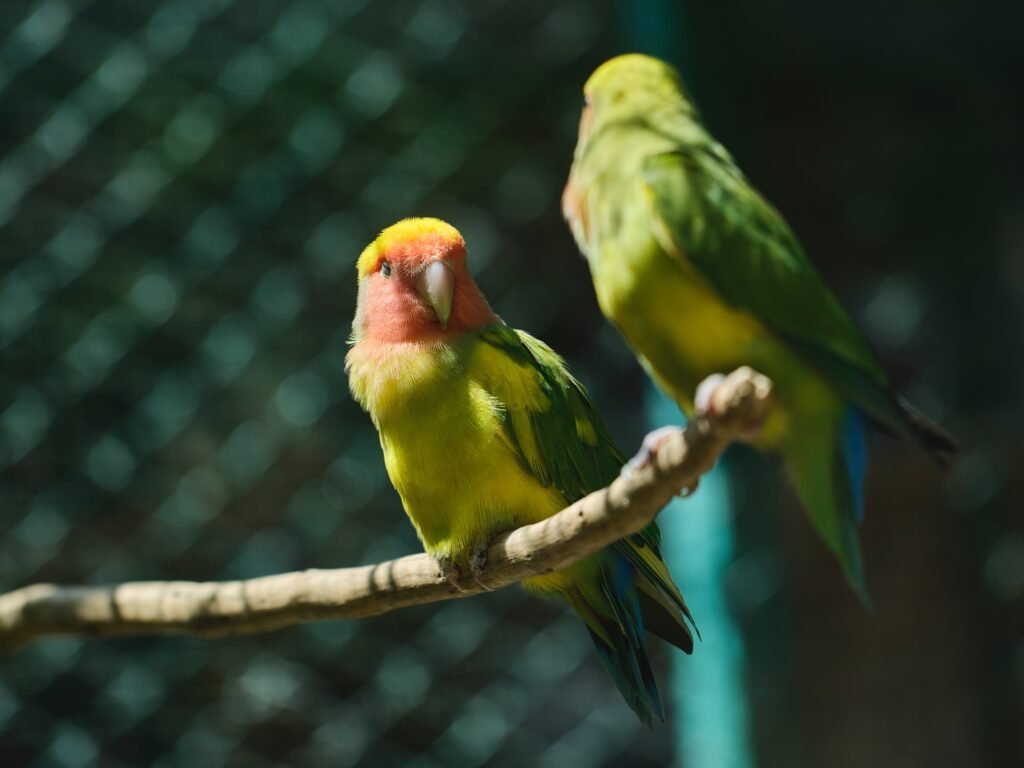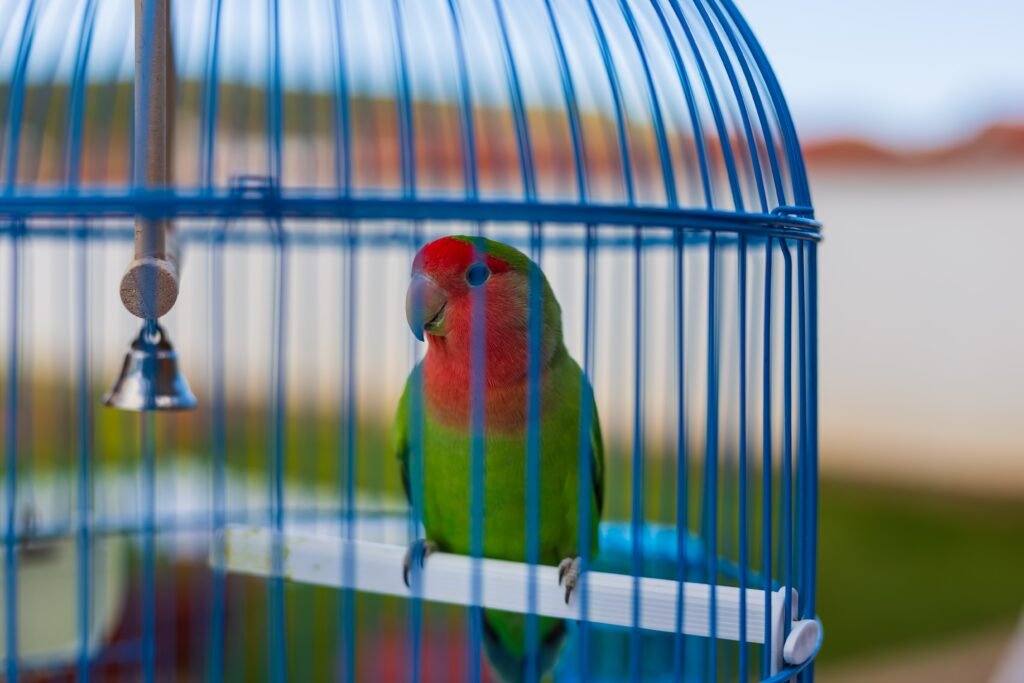Lovebirds are renowned for their vibrant and captivating plumage, which adds charm and allure. These small parrot species, belonging to the Agapornis genus, are native to Africa and have become increasingly popular as pets due to their captivating colors and affectionate nature. In this article, we will dive into the mesmerizing world of lovebird plumage, exploring the various types and colors of feathers that adorn these beautiful creatures.
Understanding Lovebird Plumage
The plumage of lovebirds plays a vital role in their overall appearance and serves several important functions. It provides insulation, protection, and aid in flight, and it also plays a significant role in attracting mates and distinguishing between different species. The feathers of lovebirds can vary greatly in color, pattern, and texture, making each bird unique.
Lovebirds have a remarkable variety of feathers that contribute to their stunning appearance. Let’s explore the different types of feathers and their specific functions:
Types of Feathers
- Contour Feathers
Contour feathers are the most prominent feathers that cover the lovebird’s body. They provide the overall shape, contour, and protection to the bird. These feathers are characterized by their sturdy and flexible nature, which allows for smooth and efficient flight. Contour feathers have a central shaft with barbs that interlock, forming a solid surface. This structure enables flight and helps with waterproofing, keeping the bird dry in wet conditions. The vibrant colors of contour feathers contribute to the lovebird’s striking appearance, with each species exhibiting its unique combination of hues.
- Down Feathers
Down feathers are soft and fluffy feathers found beneath the contour feathers. They provide insulation and help regulate the lovebird’s body temperature, keeping them warm during colder weather. These feathers are highly effective at trapping air, creating a layer of warmth close to the bird’s body. Down feathers also play a crucial role in maintaining the bird’s buoyancy, aiding them in flight by reducing overall weight. Their softness and fluffiness make them a delight to touch, adding to the tactile pleasure of interacting with lovebirds.
- Tail Feathers
The tail feathers of lovebirds are particularly distinctive and serve various purposes. They assist in steering and maneuvering during flight, providing stability and control. The tail feathers and wings act as a rudder, allowing lovebirds to make precise movements in the air. These feathers are long and narrow, with a symmetrical arrangement that aids in maintaining balance. Tail feathers also play a significant role in courtship displays, where males often showcase their vibrant tail feathers to attract potential mates. The elaborate patterns and colors of the tail feathers make them a visual spectacle during these displays.
- Flight Feathers
Flight or primary and secondary feathers are crucial for lovebirds’ flight capabilities. They are long and sturdy, providing lift and thrust for efficient flight. The primary flight feathers are located at the outer edge of the wings, while the secondary flight feathers are found closer to the body. These feathers have a complex structure with interlocking barbs forming a strong, flexible surface. The unique patterns and colors found on flight feathers accentuate the lovebird’s beauty during flight displays, creating a mesmerizing sight for bird enthusiasts and casual observers.
Diversity of Colors
Lovebirds exhibit an astonishing array of colors, with each species and individual having its unique combination. The vibrant hues displayed by lovebirds result from genetic factors and their diet. Here are some of the most common colors and mutations found in lovebird plumage:
- Wild-Type Colors
The wild-type lovebird species, such as the Fischer’s, Nyasa, and Masked lovebirds, exhibit a vibrant combination of green body feathers, yellow chest, face, and colorful rump feathers. These natural colors provide excellent camouflage in their native habitats, allowing them to blend seamlessly with the surrounding foliage. The wild-type colors are a testament to the evolutionary adaptations of lovebirds, ensuring their survival in the wild.
- Mutation Colors
Lovebirds have been selectively bred over time, resulting in various mutation colors. These mutations often alter the distribution and intensity of pigments, leading to unique combinations. Some popular mutation colors include lutino (yellow with red eyes), albino (white with red eyes), pied (mixed colors), and cinnamon (brownish tones). These mutations have given rise to a dazzling array of lovebird varieties, each with distinct beauty and appeal. Breeders and enthusiasts have embraced these mutation colors, further expanding the diversity within the lovebird population.
- Sexually Dimorphic Colors
In certain lovebird species, there is a distinct difference in plumage between males and females, known as sexual dimorphism. For example, male Fischer’s lovebirds display a vibrant orange face and forehead, while females have a paler hue. These color differences help identify the gender of lovebirds, aiding in mate selection and courtship rituals. Sexual dimorphism adds a layer of visual interest to lovebird plumage, highlighting the unique characteristics of each gender.
Caring for Lovebird Plumage
To ensure your lovebird’s plumage remains healthy and vibrant, it is essential to provide proper care and attention. Here are some tips to keep your lovebird’s feathers in optimal condition:
- Balanced Diet: A nutritious and balanced diet is crucial for maintaining healthy plumage. Provide your lovebird with fresh fruits, vegetables, high-quality pellets, and occasional treats. The diet should include foods rich in vitamins, minerals, and essential fatty acids. These nutrients support overall feather health, ensuring the feathers grow strong, vibrant, and resistant to damage.
- Regular Bathing: Lovebirds enjoy bathing, and it helps keep their feathers clean and in good condition. Provide a shallow water dish for them to splash around, or use a spray bottle to gently mist them. Bathing removes dirt and debris from the feathers and helps maintain feather structure and suppleness. Avoid using soaps or shampoos, as these can harm their delicate feathers.
- Environmental Enrichment: Lovebirds thrive when provided with a stimulating environment. Offer them toys, perches of different textures, and opportunities for exercise. This helps prevent feather plucking and encourages natural behaviors contributing to healthy plumage. Interactive toys encouraging foraging and physical activity are particularly beneficial for lovebirds, keeping them mentally and physically engaged.
- Grooming: Lovebirds are adept at preening and grooming their feathers themselves. However, you can assist by gently trimming overgrown nails and ensuring their beak remains well-maintained. Overgrown nails can interfere with perching and cause discomfort, while a properly maintained beak prevents overgrowth or malformation. Regular visits to an avian veterinarian can ensure any potential issues are addressed promptly, ensuring your lovebird’s overall health and well-being.
Conclusion
Lovebirds’ plumage is a dazzling display of nature’s beauty, with an intricate combination of colors and patterns that leave us in awe. Understanding the different types of feathers and their functions provides a deeper appreciation for these enchanting creatures. You can help your lovebird maintain healthy and vibrant plumage by providing proper care and nurturing, allowing them to flourish in all their feathered splendor. Cherish the beauty of lovebirds and let their mesmerizing plumage captivate your heart.
Frequently Asked Questions
1. What are contour feathers, and what is their function?
Contour feathers are the prominent feathers that cover the lovebird’s body. They provide shape, contour, and protection to the bird and aid in flight and waterproofing. The vibrant colors of contour feathers contribute to the lovebird’s striking appearance.
2. What are down feathers, and what is their role?
Down feathers are soft and fluffy feathers found beneath the contour feathers. They provide insulation, regulate the lovebird’s body temperature, and aid in flight by reducing overall weight. Their softness and fluffiness add to the tactile pleasure of interacting with lovebirds.
3. What is the purpose of tail feathers in lovebirds?
Tail feathers assist in steering and maneuvering during flight, providing stability and control. They also play a significant role in courtship displays, where males showcase their vibrant tail feathers to attract potential mates. The elaborate patterns and colors of the tail feathers make them a visual spectacle during these displays.
4. What are flight feathers, and why are they important?
Flight or primary and secondary feathers are crucial for lovebirds’ flight capabilities. They provide lift and thrust for efficient flight. The unique patterns and colors found on flight feathers accentuate the lovebird’s beauty during flight displays, creating a mesmerizing sight for observers.


